willie heston

3 hours, pretty much.
Michigan historian Dr. Sap and I have started a new podcast on the lore of Michigan football. This one got out of hand, just like everything else Yost touched when he arrived, largely thanks to the endless knowledge of "guest" (really, he hosted and we just listened most of the time) Toronto Sun NFL columnist John Kryk, author of Stagg vs. Yost: The Birth of Cutthroat Football.
The Sponsor:
It is sponsored by HomeSure Lending. If you're buying or refinancing your home, this is the guy to talk to. He'll work on your loan directly and walk you through a process that can get really confusing really fast. He did my loan, Brian's loan, and a lot of MGoBlog readers' loans.
--------------------------------------------
1. The Setup
(starts at 0:50)
Yost's contract (click for big), which is held at the UM Bentley Library
Yost's path to Michigan. The rules: five-point touchdowns, insane extra points that began with horizontal longsnaps, six men on the line of scrimmage, no passing. Most teams were built on the Yale system, which was all about burling your way forward at a few murderous yards per gain. Lots of rugby still in the game at this point.
2. Meet the Team
(starts at 24:19)
The 1901 team photograph, colored by unknown and color-fixed by Jason Kryk
Yost's tenants. QB Boss Weeks was the most terrifying 5'6 man in history. Everett Sweeley is my pick for greatest Michigan punter. FB Neil Snow was Jim Thorpe before Thorpe. Cap Redden and Albert Herrnstein two of the great ends; there's a memorial to Herrnstein in Illinois. Captain Hugh White built the Lincoln Memorial and the US Supreme Court Building. Dan McGugin is responsible for the SEC. Dad Gregory was small for a C and never saw a grade that high until he went to law school. Eben Wilson the tough nugget from EMU. Bruce Shorts nearly died.
3. The Season
(starts at 55:51)
- Albion. 50-0. Albion didn’t cross their own 45. Heston didn’t play until the 2nd half with the backups. Said Yost “That was easy.”
- Case. Daily Headline (via The Michigan Daily Archives):
Case showed up with their own ref (from Oberlin, who had a history with Michigan) and threatened to get back on their bus if they didn’t use their guy. Heston and Redden breakout party. Close call: Sweeley fumbled the snap and a Case guy got free, but Sweeley ran him down.
- Indiana. 33-0. Michigan’s weight was a concern, especially in a wet slog. No trickeration “with the exception of a lonely quarterback punt.” Only weakness in Michigan is defense
- Northwestern. 29-0 versus a contender. Defense held. Closest to giving up a score: NW 1st and goal at the 2. Northwestern would pull both guards into the same gap and try to plow downfield but Michigan’s D was shooting the gaps. The fans gave Northwestern a Rutgers cheer when they got an 8-yard gain. Two 50-yard runs by Heston. Yost as OBC.
- Buffalo. 128-0. Everyone had scored a TD but the center, Dad Gregory.
- Carlisle. 22-0. and Pop Warner. Played before 2,000 people in Detroit. First half M fumbles twice. The “move-over” play is used. Minister Wu is in the audience. Wu Tingfang, the Chinese minister.
- Ohio State. 21-0. Not yet The Game; Buckeyes start feigning injuries, Michigan starts making fun of Ohio State by falling down with the same injuries.
- Chicago. 22-0. The Game. Stagg was a cross between Joe Paterno and Bo Ryan, manipulating every rule to his benefit while cultivating this fiction that he was the angel.
- Beloit. 89-0. With Nebraska and Notre Dame this was one of the elite Midwest teams that couldn't get into the Big Ten because of academic elitism.
- Iowa. 50-0. Played in Chicago—Stagg scheduled his Wisconsin game atop them but it still drew 10,000 spectators.
4. The First Rose Bowl & Legacy
(starts at 2:02:43)
[Bentley]
Yost organized a Christmas game with Cal in San Francisco followed by Stanford in Pasadena. Not the first team to play out West: Stagg 1894. Charles Baird: recent former player became the first athletic director, but also had to deal with some faculty who were sure They were in charge of the athletic department—Baird was more day-to-day running of the show. Rose Bowl: Michigan sent just 15 guys—the starters, a few backups, Yost, and a manager. Good Yost story about how Stanford tried to throw in the towel. Stats: Did they score a point a minute? Most offense per game until the Run & Shoot Houston team. Is this season the reason Michigan is MICHIGAN?
MUSIC
- "Come Josephine in My Flying Machine"—Ada Jones & the American Quartet
- "Machine"—Regina Spektor
- "Extraordinary Machine"—Fiona Apple
- "A Toast to Yost from Coast to Coast"—1940 UM Glee Club (via)
- “Across 110th Street”
THE USUAL LINKS
- Helpful iTunes subscribe link
- General podcast feed link
- Direct download link (right-click/save-as)
- What's with the theme music?
Did you really coach four teams out there and they all won championships? No, I coached five teams and they all won championships.
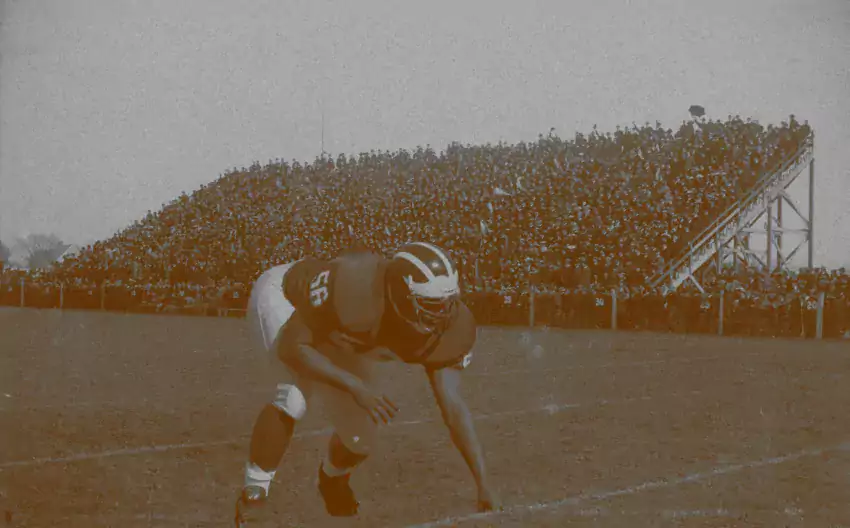
What is this? A tournament of great Michigan teams past as some gimmick to write about Old Blue over the offseason. I write up a fictitious game between two historical Michigan teams, then eulogize the loser. See the play-in round for further explanation.
Since Tom Brady’s career is now just adding some fourth quarter padding to his lead on Montana, I figured we should go back to the beginning of it. It also gives me an opportunity at the start of this series to decide what I’m going to do when a team from the Stone Age faces one from modern times who just thinks it's from the Stone Age. In truth I think it would be a slaughter, like varsity versus the club team. For the sake of keeping things interesting I’m going to set some ground rules:
- To deal with changing rules, the 1st half is played under the lower seed year's rules, and the 2nd half under the higher seed's rules.
- Old time teams will be treated like they're on a sliding scale of modern subdivisions, so for example the 1901 team will be treated as if it just romped through Division III. In general, pre-1880s=Club, pre-1916=D3, pre-War=D2, pre-1980=FCS, and late 20th century=mid-majors. This is probably inaccurate, but I don't want to punish old teams too much for existing before the University of Michigan invents time travel.
- Injured/suspended players can participate equivalent to the % of the season they played, for example the 1998 team gets Marcus Ray for about a quarter.
- I can cheat for narrative purposes
Here's the bracket, which was made by a phantom NCAA committee we can all agree doesn't know anything about these teams (because I haven't written about them yet):
---------------------------
Round of 64: 1902 (7-seed) vs 1998 (10-seed)
Willie Heston outpaces 1998 safety DeWayne Patmon, because unfair characterizations of DeWayne Patmon's speed are pretty much all anyone remembers about DeWayne Patmon
Both of these teams had to follow national championship seasons, and combined most of those loaded rosters with unprecedentedly good recruiting classes. The 1902s had a much tougher act to follow, as their immediate predecessor (Yost’s first) outscored opponents 555-0. They also returned more, including Willie Heston, one of the best backs in the game’s history. Understandably, the 1998s would feel confident about beating 34 doughty white guys.
At first glance it didn't look very competitive. The 1998s had five offensive linemen over 300 pounds, including sophomores Jeff Backus and Steve Hutchinson, while the 1902s were proud of the fact that their average weight was just 180. Hayden Epstein booted the opening kickoff through the uprights, and a gaping Yost had to be informed that under 1998 rules no points were awarded for that.
The 1998 team built up a solid-enough-looking 9-0 lead in the first half, keyed by two 3rd and long conversions by Tom Brady to Markus Knight and Tai Streets. But the 1902s had the C-Will/A-Train running game scouted well, as the small but fearless Yostmen frustrated 1998 Michigan’s blockers with a seven-man front and diving into gaps. Carr extended the frustration to the fans by refusing to throw the ball despite having Tom friggin’ Brady against eleven dudes who’d literally never seen a forward pass.
The 1998s also kept having to start deep in their own zone. The 1902s managed to pin their afterbears back with a pair of gorgeous 60-yard punts by Everett Sweeney. They also were able to churn out a few first downs each drive, with Jim Herrman's '98 defense persistently confounded by Yost's no-huddle, high-tempo offense. The hurry-up forced Carr to burn all his timeouts early, and that contributed to his decision to run then take a knee when the '98s got the ball back on their 30 with over a minute remaining.
“They’re completely immune to deception,” said Lloyd Carr as his team went into the locker room for halftime. “Even our go-to screen pass wasn’t working.”
“That’s because I invented it,” quipped Yost.
[After the JUMP: The second half under 1902 rules, and one of these teams is eulogized]

You know those “make your all-time” lists that circulate in the offseason? Suddenly they got serious.
Previously:
This week: I’ve been leaving out pre-Nineties players because I didn’t gain consciousness until well into the Eighties. We’ll leave the Best of Bo for Sap. These are Pre-Bo. Also this one’s going to be long because a lot of these guys are probably unfamiliar to you.
I did not run any of this past Greg Dooley, who studies this stuff, or the UM Bentley Library guys who curate it, or Craig Ross, who was alive for all of it, and I reserve the right to edit based on anything they might choose to add because they know this stuff way better than I do.
----------------------------------
Rules: Players are considered for how they compared to other players of their own time—a 180-pound center from a Point-a-Minute team wouldn’t survive a series versus one of Woody Hayes’s defensive lines; on the other hand Bump’s players didn’t have to worry about cholera. Pre-platooning players can be eligible for both sides of the ball.
Cutoff Point: To avoid overlap the majority of his playing time had to come before 1969. Just give Bump some credit for recruiting the excellent 1968 class.
Foul Language Warning: The faint at heart might want to skip tight end.
----------------------------------
Quarterback: Benny Friedman

Kinda tough to throw a spiral with that [The Michigan History Project]
Who was Michigan’s greatest quarterback ever debatable, but this much is not: He was certainly Jewish.
I’m going with Benny Friedman over Harry Newman. Friedman was the game’s first great passer, but still more Denard Robinson than Tom Brady. Back in the day freshmen were still not allowed to play varsity, so in 1923 the Glenville (yes, a powerhouse even then) product had to resign himself to embarrassing his classmates. In 1924 Yost was Barry Alvarez-ing over his handpicked successor George Little, and Little refused to put Benny, already a campus legend, on the field. Until, that is, Michigan lost to Red Grange’s Illinois, and a furious Yost joined the campus chorus to play Friedman. The result was immediate and spectacular. After ‘24 Yost sent Little packing, inserted Friedman as his starting QB, and in concert with a certain future Michigan head coach, outscored opponents 227 to 3*. The following year they lost only to eventual national champion Navy (a team Benny and Bennie handled 54-0 at home in ‘25). Friedman also kicked every field goal and extra point, led the team in rushing, returned a kickoff 85 yards, threw more TD passes than the rest of the Big Ten combined, and called every play.
* [As luck would have it the 3 went to Northwestern in a ridiculous 3-2 mudfest that got the safety rule changed and nearly got Evanston burned to the ground; Craig Ross wrote about it in HTTV 2015.]
Honorable Mention: Harry Newman, who went 24-1-2 as a starter and should be counted among Heisman winners except they called it the Fairbanks Trophy back then. Big Bob Timberlake
[After THE JUMP: Icons and Legends]
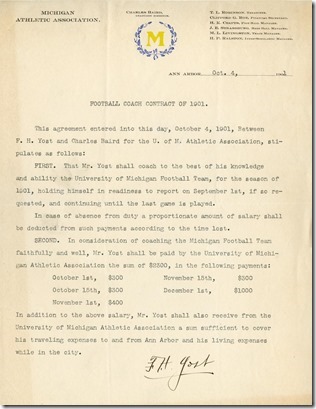
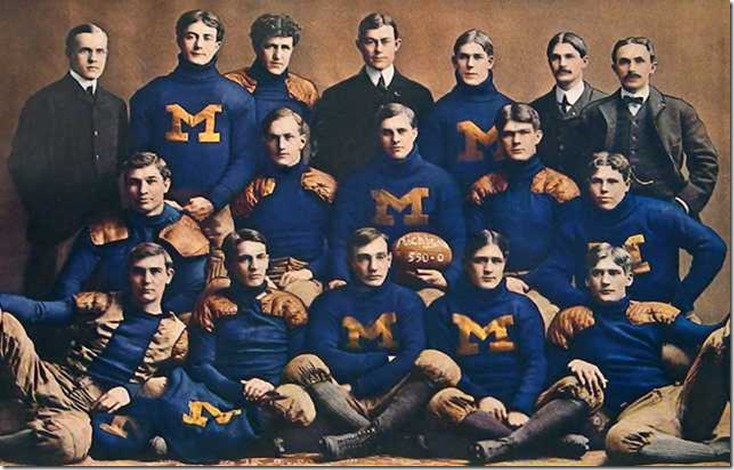
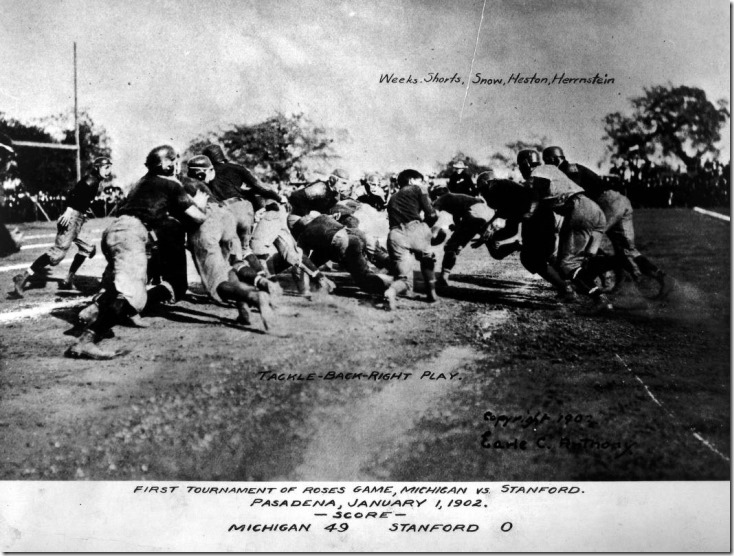

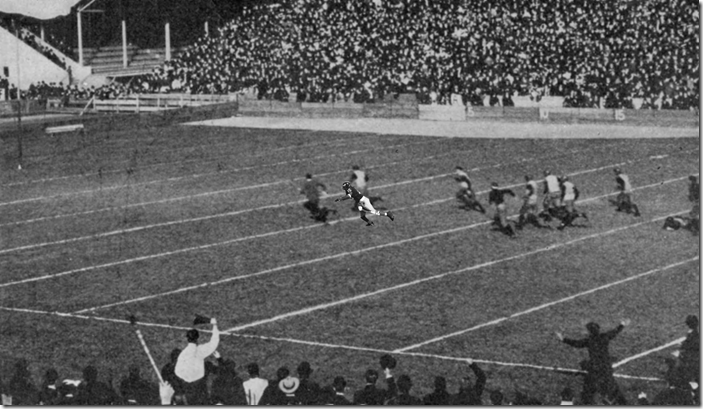
18